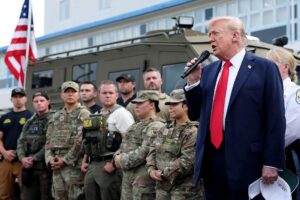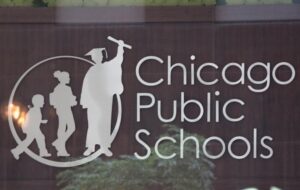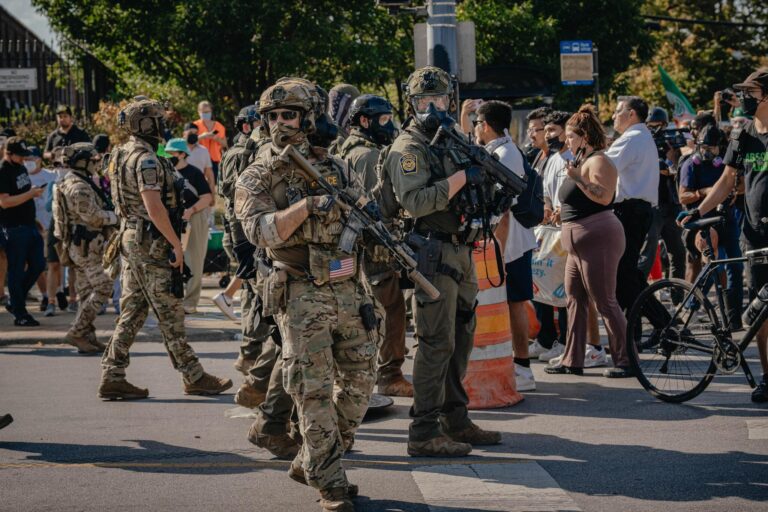Federal Agents Shoot Woman Following Vehicle Standoff in Chicago Neighborhood
In the early hours of Thursday, a Chicago neighborhood witnessed a critical incident involving federal agents and a female driver that escalated into a shooting. The Department of Homeland Security (DHS) reported that the confrontation began when the woman’s vehicle aggressively collided with and subsequently trapped the agents’ cars. This rapid escalation compelled law enforcement to respond with force to protect themselves and the public.
Key facts confirmed by officials include:
- Location: Residential district in Chicago
- Parties Involved: Federal agents and a female motorist
- Trigger Event: Vehicle ramming and containment by law enforcement
- Result: Woman shot and emergency medical response activated
- Examination Status: DHS and local authorities conducting a thorough inquiry
| Aspect | Details |
|---|---|
| Time of Incident | Late afternoon |
| Agency Involved | Department of Homeland Security |
| Agents’ Reaction | Use of force after being boxed in by suspect’s vehicle |
| Current Condition | Woman hospitalized; medical status undisclosed |
| Community Effects | Temporary street closures and increased law enforcement presence |
Incident Breakdown: Vehicle Ramming and Tactical Encirclement as Described by DHS
The Department of Homeland Security detailed that the episode began when federal agents noticed a vehicle exhibiting suspicious behavior in a Chicago neighborhood. The driver allegedly attempted to ram one of the agents’ vehicles, prompting a swift tactical response. Agents coordinated to surround the suspect’s car with multiple vehicles, effectively immobilizing it and preventing escape before shots were fired.
Highlights from the DHS narrative include:
- The suspect’s vehicle made an aggressive move toward a federal vehicle, initiating the ramming incident.
- Federal agents executed a coordinated maneuver to box in the suspect’s car using several units.
- Despite repeated verbal commands, the driver did not comply, leading to the use of force.
- The woman was shot during the confrontation and received immediate medical attention at the scene.
| Event | Details |
|---|---|
| Initial Action | Suspect’s vehicle rams federal agent’s car |
| Law Enforcement Tactic | Multiple vehicles used to encircle and trap suspect |
| Result | Woman shot; medical aid provided promptly |
Local Community Reaction and Neighborhood Impact Post-Shooting
The shooting incident triggered immediate concern and unrest among residents of the affected Chicago neighborhood.Many locals expressed feelings of anxiety, confusion, and dissatisfaction with the presence and actions of federal agents in their community. In response, neighborhood leaders organized urgent meetings to discuss public safety and demand greater clarity from law enforcement agencies. The event intensified existing worries about rising violence and the militarization of policing in residential areas.
Social media platforms became a hub for community members calling for peaceful dialog and accountability,reflecting a neighborhood striving to heal and rebuild trust. Local advocacy groups proposed several initiatives aimed at supporting those impacted and fostering safer environments, including:
- Outreach and Support Services: Offering counseling and legal aid to affected families.
- Collaborative Neighborhood Patrols: Enhancing cooperation between residents and local police forces.
- Public Engagement Forums: Establishing regular meetings with federal representatives to discuss concerns.
| Community Programme | Objective | Status |
|---|---|---|
| Neighborhood Safety Patrol | Partner with local police to reduce crime | Active |
| Victim Assistance Hotline | Provide emotional and legal support | Operational |
| Monthly Community Forums | Facilitate dialogue with federal agencies | Scheduled |
Guidelines for Law Enforcement: Use of Force and Engagement Strategies
It is indeed imperative that federal law enforcement personnel emphasize de-escalation methods to reduce the need for force during volatile encounters. This involves comprehensive training focused on identifying behavioral indicators and employing communication techniques designed to calm situations before they escalate. Agencies should implement strict protocols that prioritize restraint, reserving force as a final measure when all other options have been tired.
Additionally, ongoing psychological support and stress management resources for officers can enhance sound judgment during critical incidents.Transparency and accountability remain cornerstones for fostering public trust. The adoption of body-worn cameras and self-reliant post-incident reviews by external oversight bodies can ensure objective evaluations of law enforcement actions.
Outlined below is a streamlined framework of recommended best practices for use of force:
| Best Practice | Description |
|---|---|
| Verbal Warnings | Issuing clear, audible commands before physical engagement |
| Proportionality | Matching the level of force to the threat posed |
| Ongoing Assessment | Continuously evaluating the situation during the encounter |
| Independent Review | Conducting impartial investigations and transparent reporting post-incident |
Conclusion: Investigation Continues Amid Calls for Transparency
The shooting in the Chicago neighborhood remains under active investigation as federal and local authorities meticulously examine the events that led to the use of deadly force. Officials have urged the public to refrain from speculation and allow the investigative process to unfold thoroughly. Meanwhile, community leaders and residents continue to advocate for openness and accountability, seeking answers and reassurance in the wake of the incident. Further updates will be shared as new information emerges.








